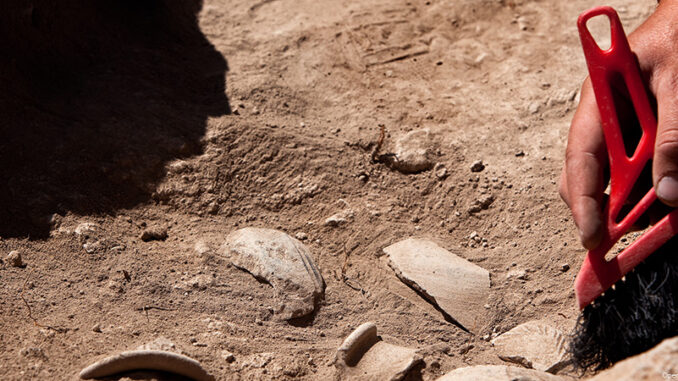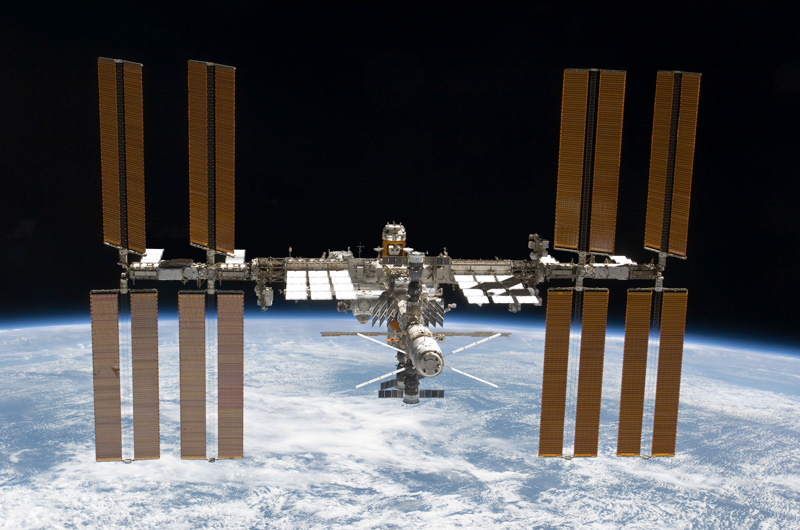
A Bridge of Love in Northern Africa
In a world where it often seems like everyone is at war, the neighboring North African countries of Ethiopia and Eritrea have finally made peace.
Once upon a time, these two countries were actually the same nation. But twenty years ago, Eritrea declared its independence from Ethiopia. Soon after, a violent border war broke out that has divided the two nations ever since. More than 80,000 people were killed, cross-border travel was shut down, and even phone calls between Ethiopia and Eritrea were forbidden.
But last week, Prime Minister Abiy Ahmed of Ethiopia and President Isaias Afwerki of Eritrea announced a formal declaration of peace between their nations. According to the new agreement, the embassies will be reopened, political prisoners will be released, cross-border travel (with visas) and phone calls are again permitted. Starting July 18, it will once again be possible to take an airplane flight between the two capitals. Trade will be resumed, and all economic and diplomatic ties will be restored.
This is wonderful news for a region that’s too often known for its instability. Both nations stand a lot to gain from their newfound friendship. Eritrea, despite its beauty, has not enjoyed the same growth that Ethiopia has. It suffers from a poor economy and poor relations with other nations. In fact, Eritreans were one of the largest groups of people fleeing to Europe during Europe’s refugee crisis a few years ago. For its part, Ethiopia is landlocked and will benefit greatly from having access to Assab, a vital Eritrean port on the Red Sea.
In the words of Prime Minister Abiy: “There is no longer a border between Eritrea and Ethiopia because a bridge of love has destroyed it.”
Dig Deeper Use Internet resources to research the early life of Abiy Ahmed before he became Prime Minister of Ethiopia. Do you think these experiences helped shape his willingness to rebuild ties with Eritrea? Explain.
Common Ground on Family Leave?
Democrats and Republicans in Congress have long been divided over the issue of paid family leave: the idea that men and women working at full-time jobs should receive guaranteed paid time off when a baby is born or adopted, or when a member of their family faces a medical crisis. But is it possible that the two political parties are now finally coming to an agreement?
Last Wednesday, Ivanka Trump, the president’s daughter, wrote an opinion piece for Fox News advocating for mandatory six weeks of paid family leave. She discussed how her father pushed for this idea during his 2016 campaign, and stated that it is now gaining bipartisan support. However, Democrats are quick to point out that Democrats–not Republicans–have been the ones pushing for paid family leave for years. Also, the plan that Ivanka has been working on with conservative Florida senator Marco Rubio isn’t exactly what Democrats have in mind. This plan would allow families to fund their paid leave by drawing from their social security accounts, which would mean putting off their retirement. Instead, Democrats support the 2013 FAMILY Act, which would allow up to 60 days of paid family leave and would also set up a federal Office of Paid Family and Medical Leave under the umbrella of the Social Security Administration.
Nevertheless, bipartisan support for paid family leave continues to grow, meaning that Congress may finally have found an issue on which there is common ground.
Dig Deeper Use internet resources to research the current law on family leave, the 1993 Family and Medical Leave Act (FMLA). Write a short paragraph about the FMLA. Do you agree with lawmakers that it should be changed? Why or why not?
Ancient Discovery in China
Scientists in China have made a fascinating discovery: ancient stone tools that suggest that early humans left Africa much earlier than previously thought.
The tools, which are estimated to be about 2.1 million years old, were found in the western part of China and are the oldest tools ever to be found outside of the African continent. These ancient human ancestors didn’t bear a great resemblance to human beings as we know them today. They were called hominins, and were small apes that walked upright and had a brain about the size of a chimpanzee’s. Up until now, it was assumed that the first human ancestors to leave their place of origin in Africa was Homo erectus, which was much larger (about the same size we are today) and had a brain about two-thirds of our current size. But this discovery suggests that humans were actually on the move much sooner than Homo erectus, which didn’t appear until about 1.9 million years ago. These adventurous early hominins likely used stone tools to perform tasks such as removing meat from carcasses.
Finding the tools was painstaking work: there were over a hundred of them, buried in 17 geologic layers in a steep and dangerous gully. Some scientists disagree with the significance of the find, saying that even though the tools have been found, there is no actual proof of hominins in Asia this long ago unless actual hominin fossils are located as well.
Dig Deeper Scientists now believe that early humans traveled from Africa to Asia about 2.1 million years ago. When did ancient humans first appear on the continent that is now North America? Use internet resources to research your answer.
Commercial Crew Program Hits a Snag
The United States retired its Space Shuttle program in 2011. Since then, NASA has had to pay for American astronauts to hitch rides to the international space station on the Russian Soyuz space capsule, at the cost of about $82 million per seat. But that contract is set to expire at the end of 2019. Rather than have the U.S. government reopen the Space Shuttle, a private company will be used to transport the astronauts into orbit. SpaceX and Boeing are the two companies who are currently competing for this job, called the Commercial Crew Program.

However, there is a problem. Both companies were originally required to be able to certify that they would be ready to transport human astronauts by 2017. The estimated deadline for that certification has now stretched until December 2019 for Boeing’s Starliner spacecraft and January 2020 for SpaceX’s Crew Dragon. Since the Russian contract expires at the same time, that doesn’t leave much wiggle room for delays.
Last week, the Government Accountability Office put out a lengthy report that said, among other things, that NASA needs to start looking at options outside of SpaceX and Boeing for the Commercial Crew Program. This is because the U.S. has invested many billions of dollars into the space station, and if something goes wrong and the Russian contract expires before the new program is up and running, American astronauts won’t be able to make use of that investment.
NASA’s suggestion for how to fix the problem? Lengthen Boeing’s first manned test flight from two weeks to six months, so that it can serve as a full mission.
